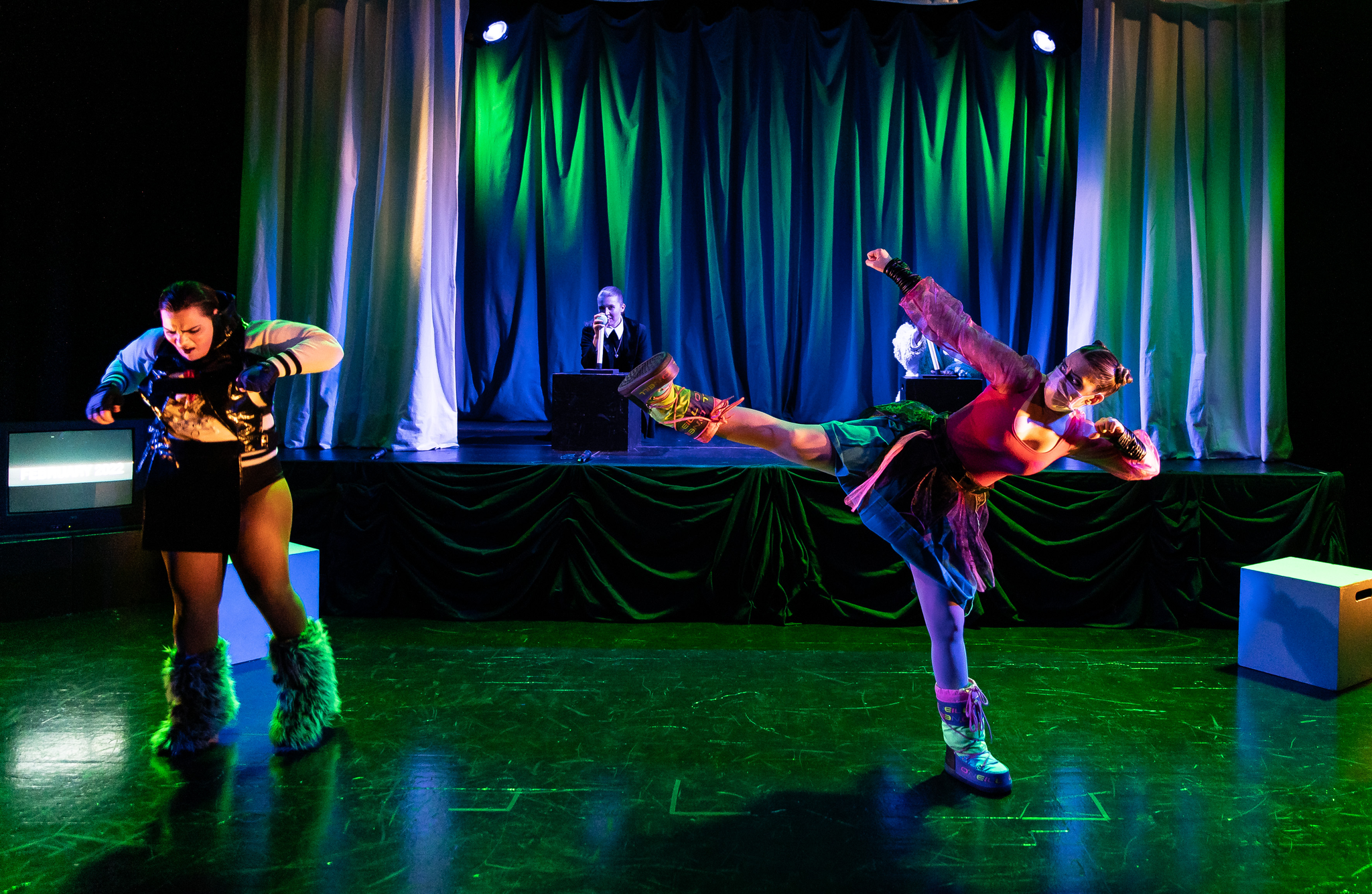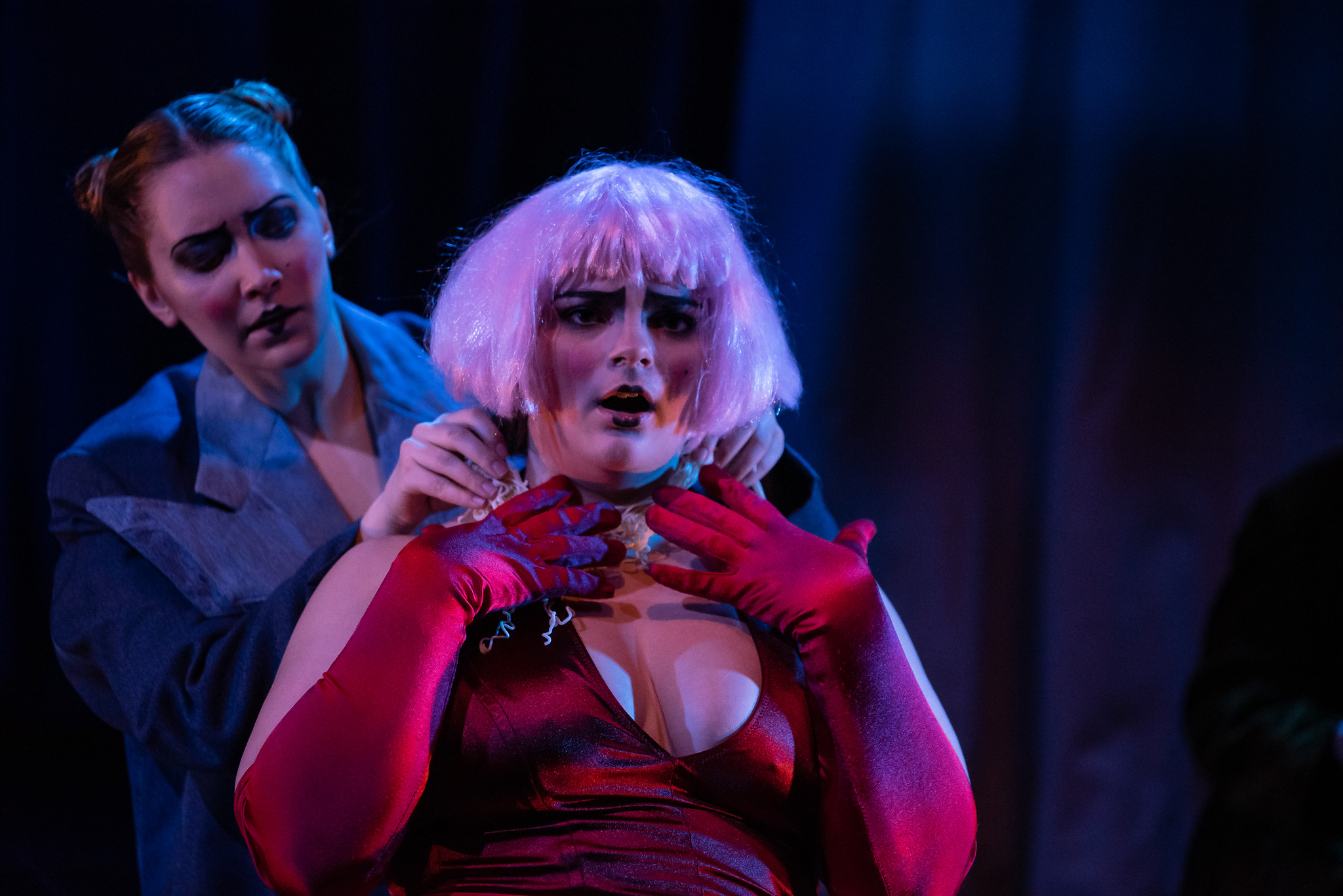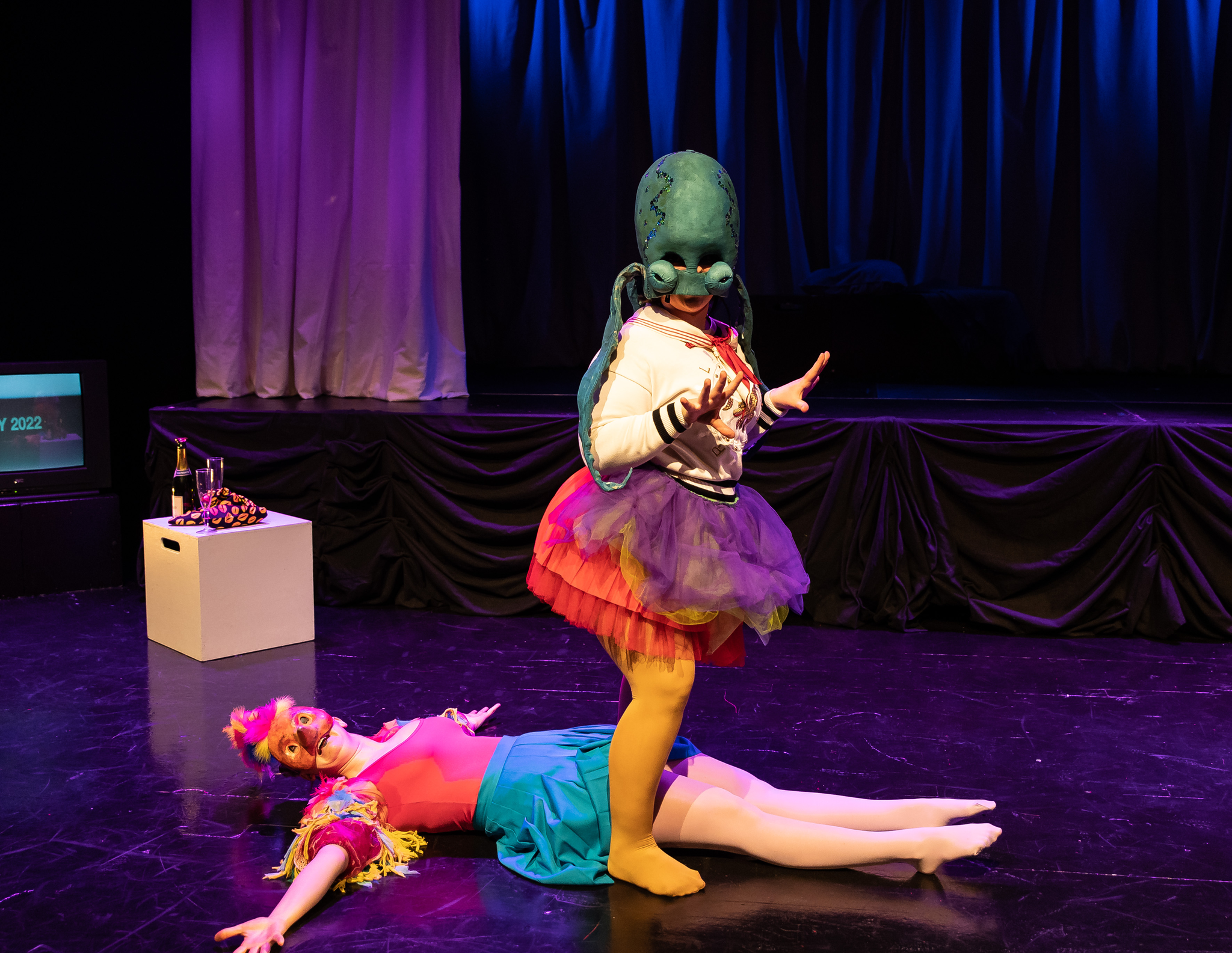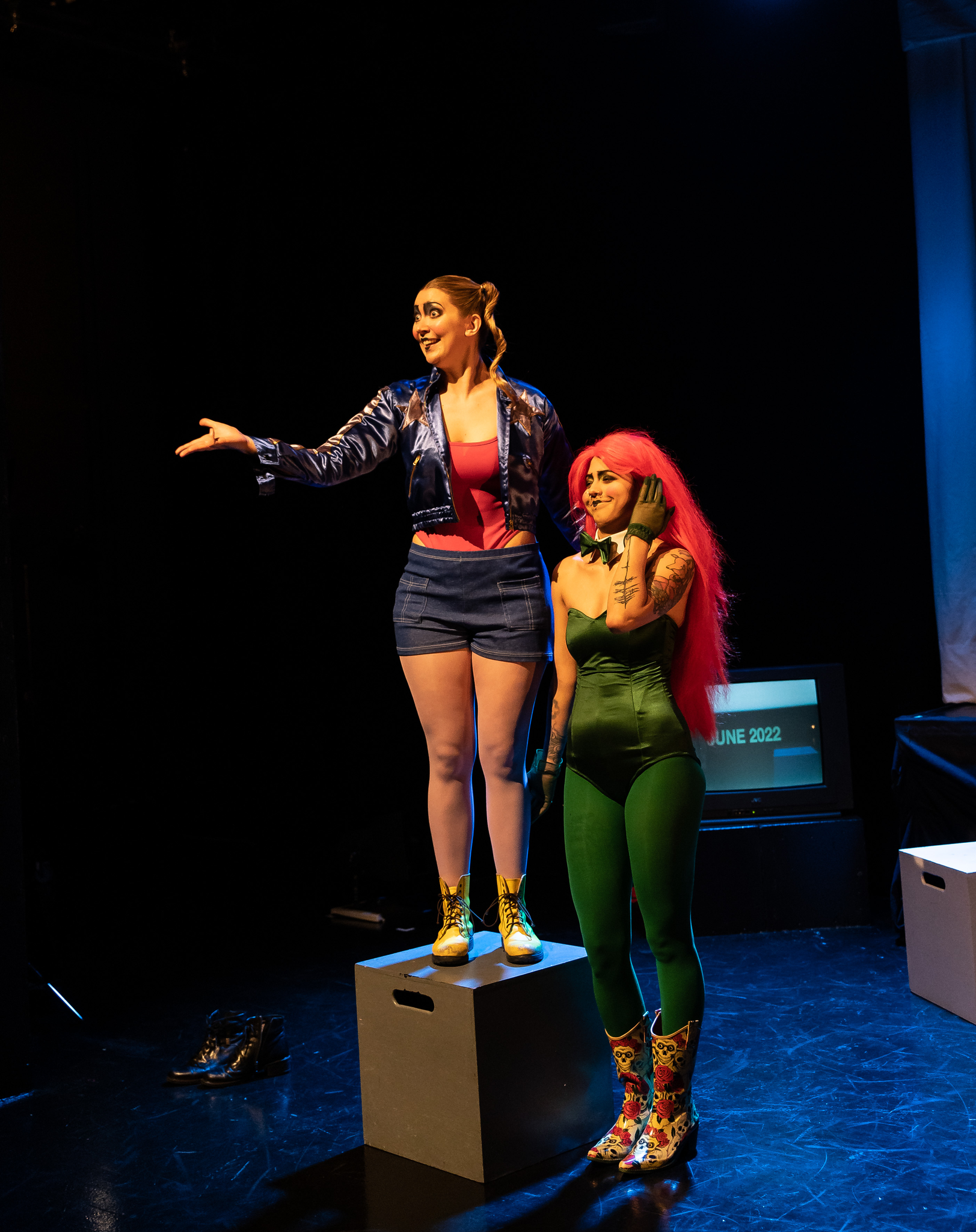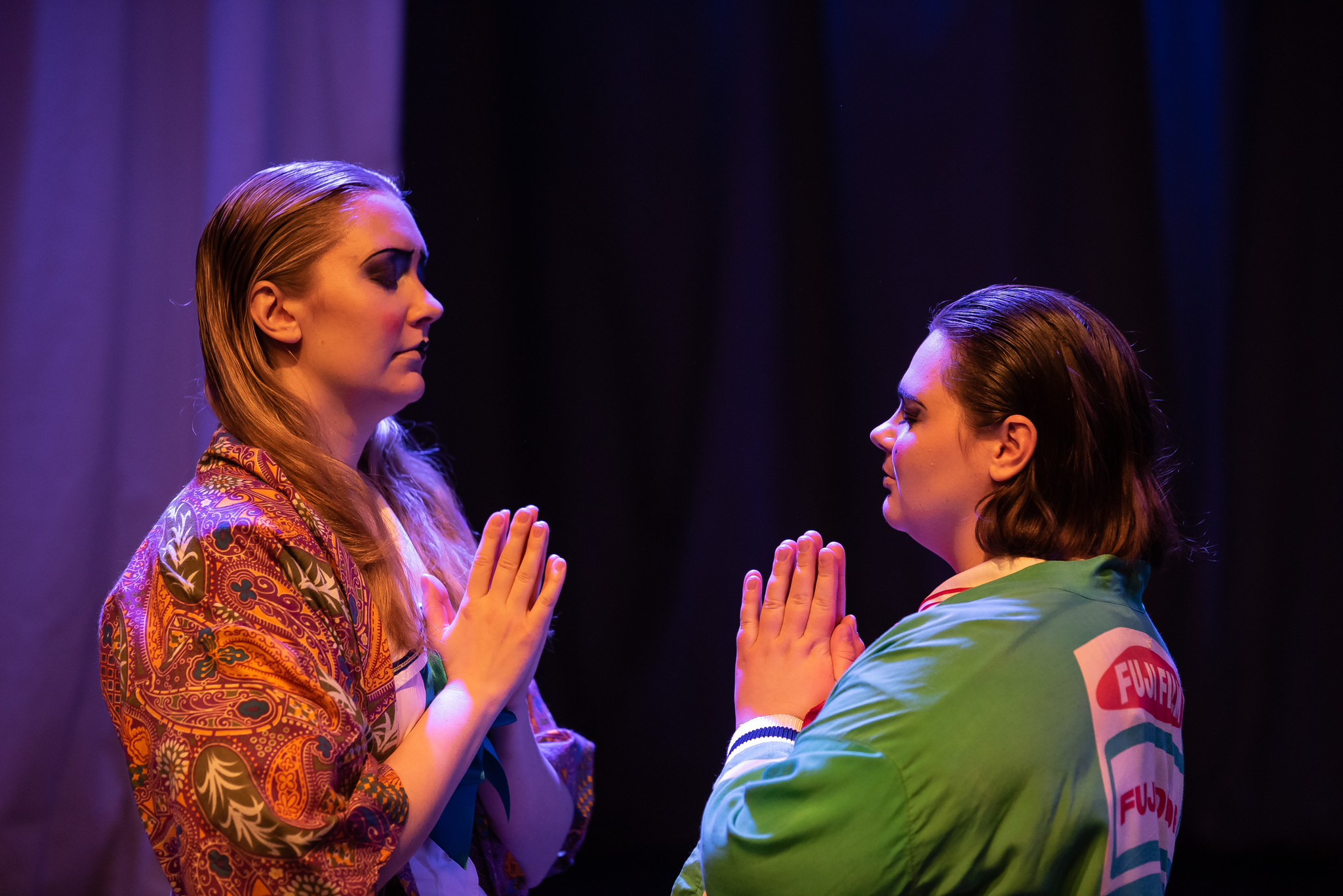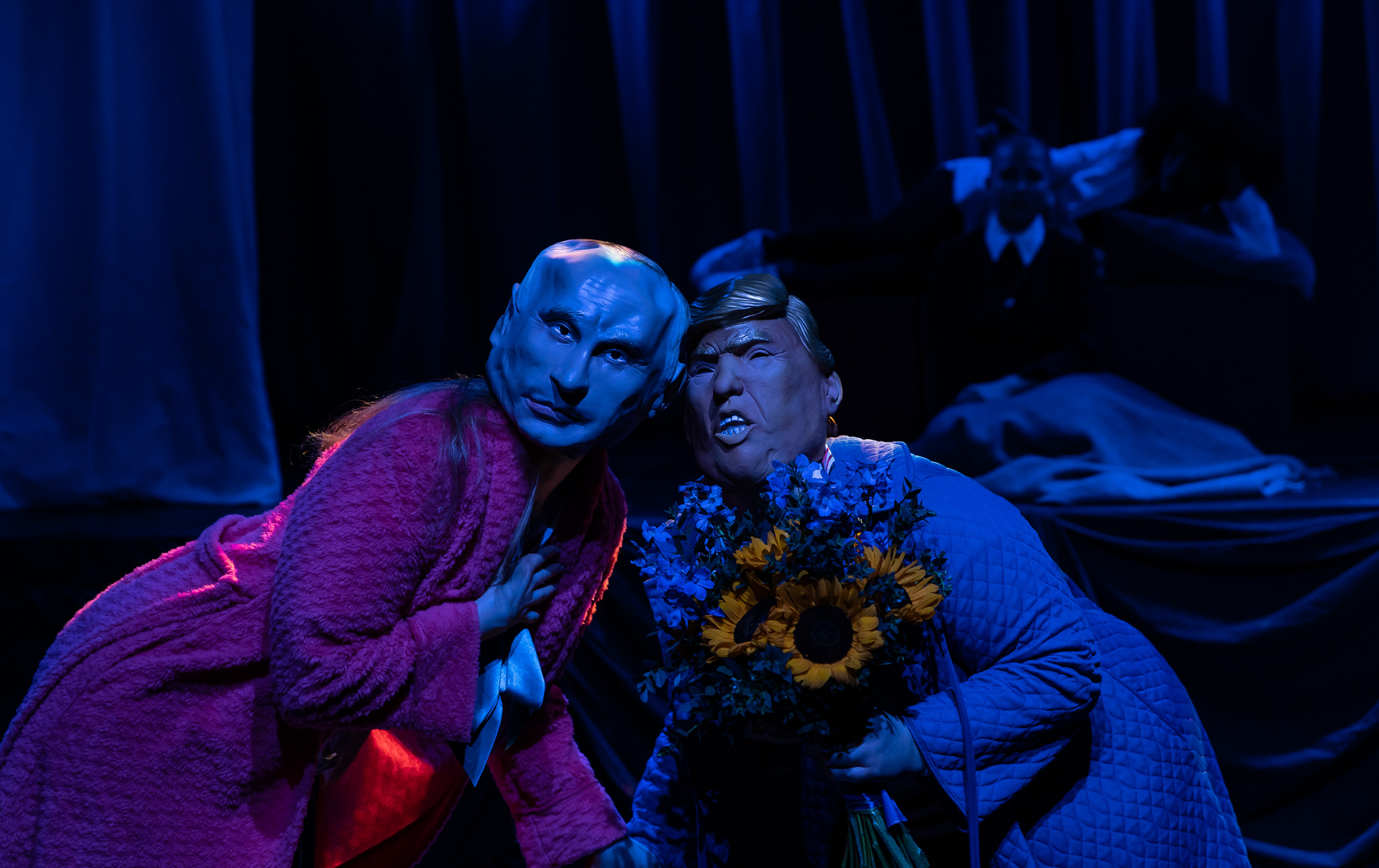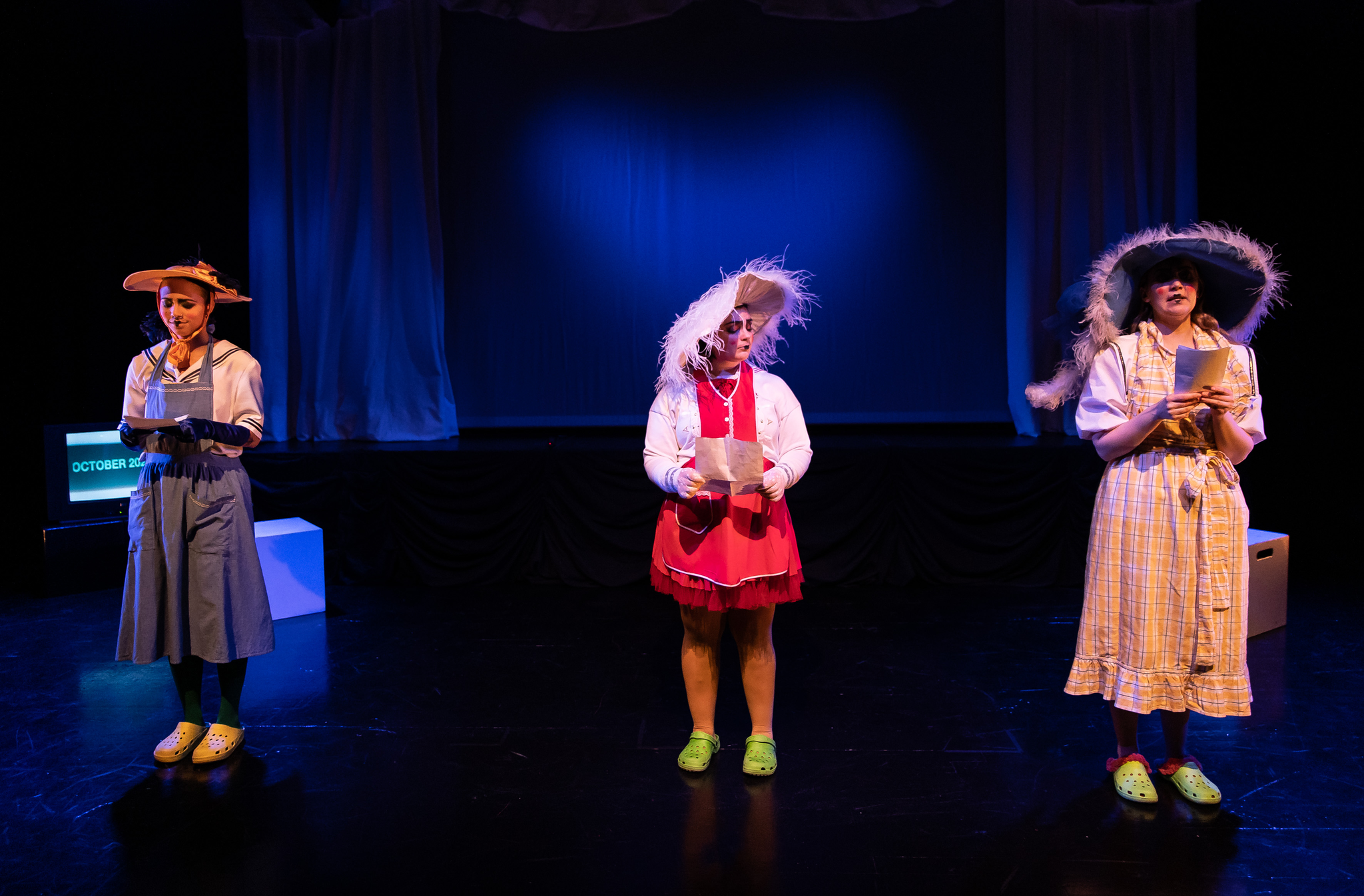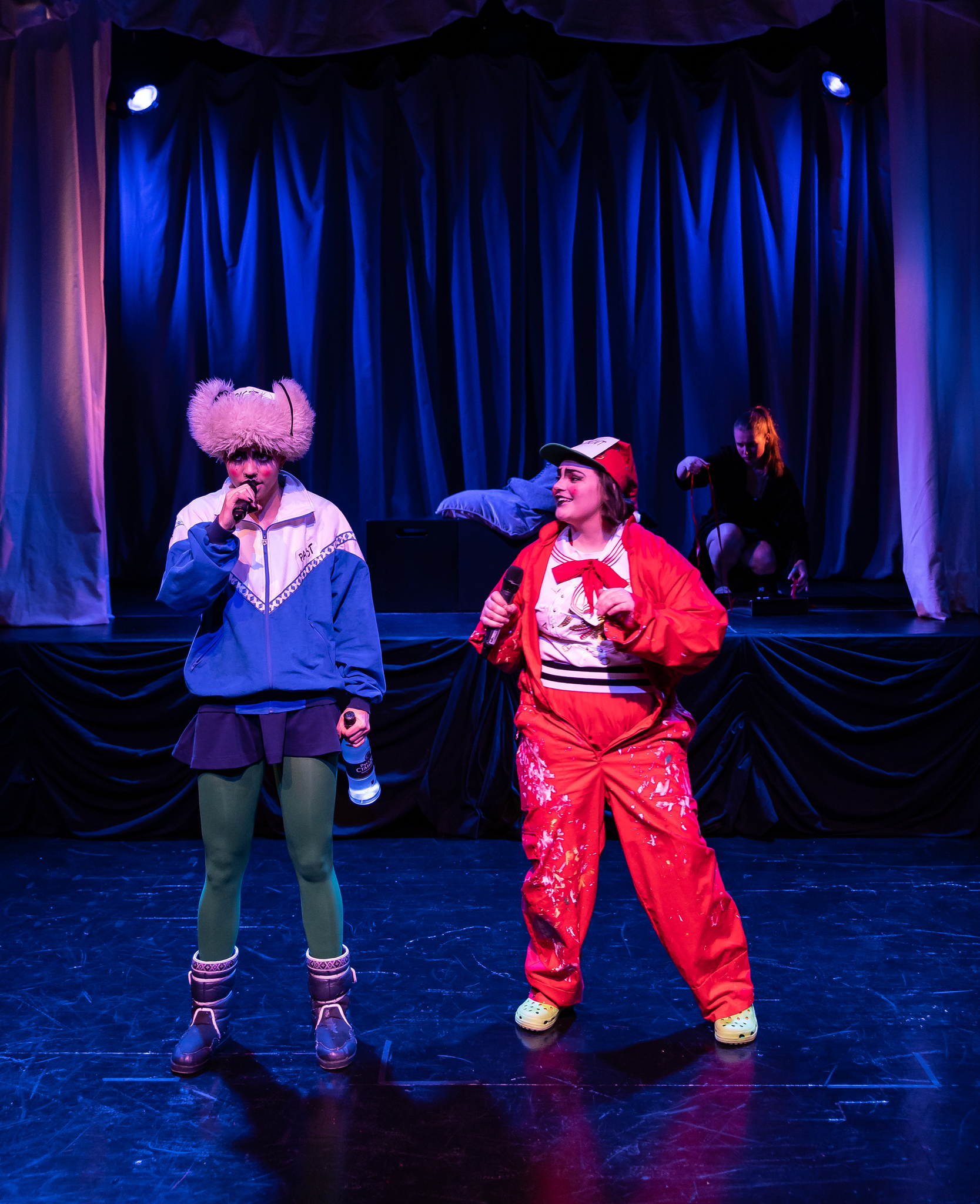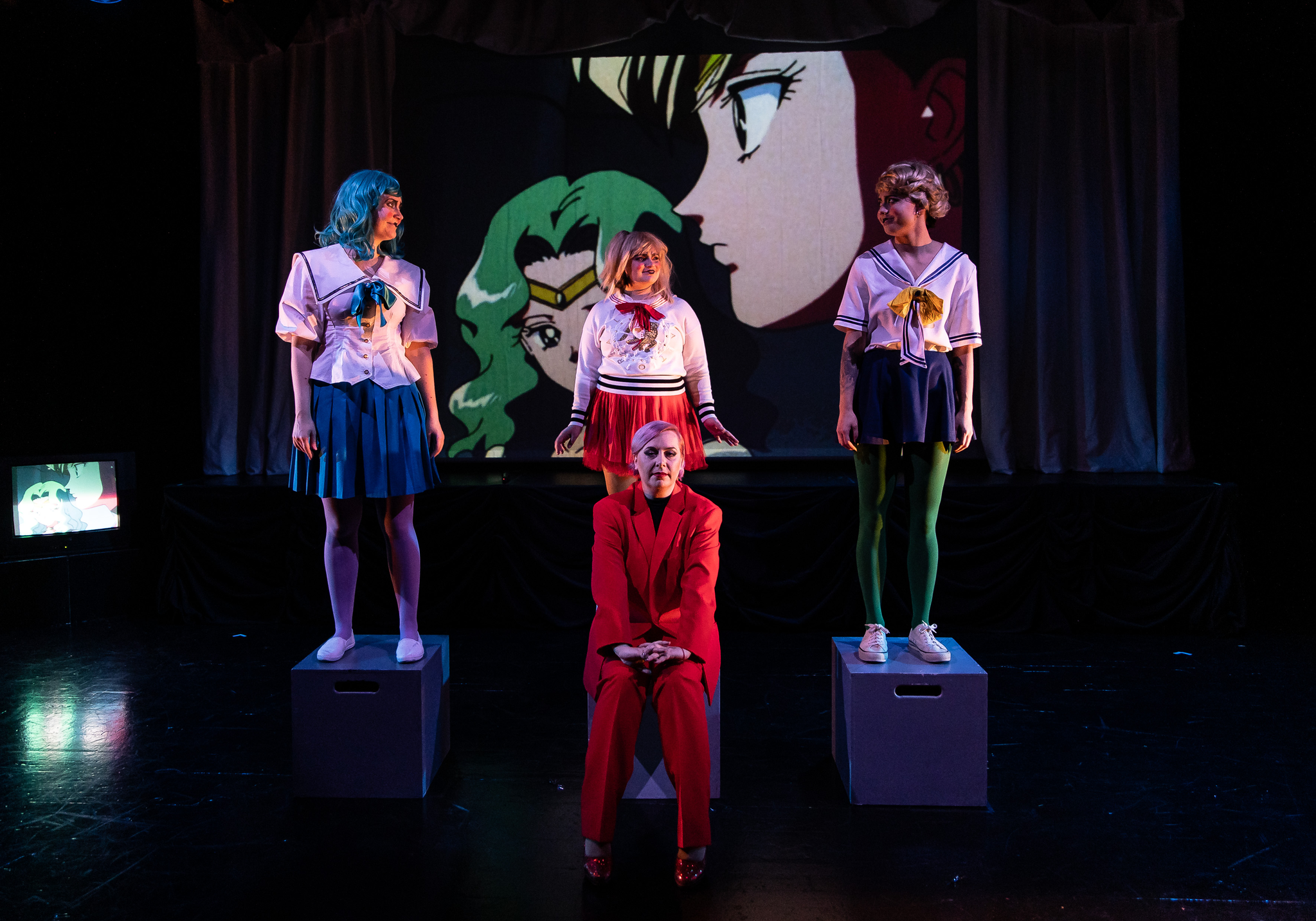2.3 Pop-culture references: choices and significance.
Previously, I explained the importance of inclusion of pop-culture references in my play Neptune. Here, I want to focus on the meaning and significance of each of those references.
Neptune has three main characters (MC, M and V) and over a dozen fictional characters taken mostly from popular culture. Due to my choice of episodic structure, Neptune is split into twelve parts – one per month of the year 2022. Every month has its own theme that correlates with a certain issue that broke my relationship (the one central to the narrative) and was also somehow present in my life in 2022, for example: money, disease, sex, and so on. Each episode has three layers: narration done by MC where the actual events of 2022 are brought up; memories of a certain situation\aspect of the central relationship between M and V that somehow correlate with the event brought up in the same episode; and a vignette where fictional characters act in a made-up scene on the same topic, mirroring the main couple.
One extremely important aspect that was lost in the production of this play (which I will discuss in detail in Chapter 3) was the mirror-quality of fictional characters and the main couple, M and V. On the title page of my play, before listing all fictional characters, I deliberately wrote: ‘all the following roles are played by two actors’. Why is this important? There are several reasons. Firstly, the idea of layers of memory and imagination is something that I specifically wanted to work with in this play. To what extent can a memory of your loved one be true and objective? To what extent might it get distorted with time? This is where the range extends from supposed realism of M and V’s presence on stage to exaggerated existence of fictional characters mirroring them. Essentially, all my characters in this play are M and V, two women in a relationship. V is my memory of me, so she is a double of MC, the narrator (also me), and every second character in the play is a double of her. And M is my memory of my beloved partner with every first character (apart from MC of course) being her double. There is never anyone else in this play (despite of the whole array of characters), just M and V and their story with multiple variations – from truth to fiction, and this idea is reflective of how I perceive and want to portray a relationship – through this tunnel vision, where nothing else exists but you and your partner, with numerous reimaginings of each other .
Secondly, fictional characters being mirrors of two main characters reference the juxtaposition between real and perceived in a relationship, or, more precisely, real and ideal. Due to prominence of media and pop-culture, a lot of people nowadays have certain expectations of what an ideal romantic relationship should look like. Oftentimes, the failure of a relationship is caused by inadequacy of such ideals in reality. No relationship is as picture-perfect as some media sources portray them to be, thus, the gap between real and fictional in romantic love widens and becomes a pit that not many couples can cross over. By showcasing real episodes from M and V’s life in parallel with fictional couples’ relationships, I wanted to bring this contrast into light.
And finally, and most importantly, the idea of mirroring couples, or the same couple being split into myriads of other couples is reflective of the main message that I wanted to convey in this play: love prevails, it wins and it saves. Love is everywhere and in everything and in everyone. There is another deliberate remark that I wrote on the title page of Neptune under the list of characters: “at some point in this play every character is slowdancing with their partner”. This simple physical gesture of a slow-dance, basically a hug and a movement between two people, is my visual expression of intimacy and love. In my actual relationship with M, we used to repeat this simple action a lot due to the fact that it was the only time I truly felt and expressed vulnerability and emotion. To me, slowdancing that I assigned to each couple is a sign that no matter what happens in their episode (they all deal with various issues and conflicts), they will eventually come together in a gesture of trust and acceptance, united in love. In the world of war that I was experiencing in the time of writing Neptune, this gesture was the center of everything I wanted to express.
Now, after I have explained why I introduced fictional pop-culture referenced characters into this play and what they essentially meant overall, the next step is to give a very brief justification for each of individual choices. The choices of characters were mainly influenced by the topic of the month, so I will list the months below with their respective topics and characters assigned to them.
January. Inner homophobia. This month’s story was about my difficult relationship with accepting my own sexuality that transferred into unacceptance of all same-sex relationship that I have had in my life, including the one with M. The characters for this chapter are Sailor Neptune and Sailor Uranus, a lesbian couple from popular in the 90s anime Sailor Moon. This couple was my first ever exposure to queer representation in media, and it was my first trigger to question my own sexuality. Previously, I mentioned that the play is called Neptune because of a song that prompted its conceptualization; however, the second main reason is the character of Sailor Neptune who I identified as in my teenage years, and who became an embodiment of queer love in my eyes. It is also important that in this chapter and at some point in the original anime both characters die, protecting each other, which prompts mine (and of course MC’s) internal crisis of dismissing queer love as impossible.
February. War. The events of this episode follow the beginning of Russian invasion into Ukraine in February 2022. The parallel events depict M and V playing in the arcade, with central scene being their Mortal Combat game fight. Consequently, the fictional characters in this chapter are Sub Zero and Mileena – two Mortal Combat fighters that finish their battle with a kiss and a slowdance. The idea of war being a game to the higherups and the desire to stop it with love were central in my choice of characters.
March. Home. This chapter depicts my departure from Russia due to political threats that I was receiving. It basically revolves around notions of home in every sense, including its importance in V and M’s relationship as well – as an idea of home contained in another person. The characters in this chapter are Wicked Witch and Good Witch from The Wizard of Oz, mainly due to the parallel between the story of Dorothy in the book and my own story – with the hurricane destroying her house and transporting her to the faraway land. Another aspect of this choice was a prominent headcanon in queer culture, based on the musical Wicked (which centers on Wicked Witch and Good Witch’s relationship) that they are indeed a queer couple in love, even though it is never explicitly stated in this musical.
April. Money. This month’s story deals with all sorts of money issues both in the relationship of V and M, and in my situation in 2022 when Russia was financially cut off from the rest of the world, which brought me to the brink of actual poverty due to the inability to use any of my assets. The characters here are borrowed from Pretty Woman film, but since I never bothered to remember their names, in the play they are just called Julia Roberts and Richard Geere. Their episodes mirror scenes from the film in an inverted way (almost the same text but always with a twist in the end), through which I explore the themes of monetary dependency in relationships.
May. Sex. In my drafts, all those scenes were just called ‘porn’, and the chapter indeed mainly discusses porn and narrator’s relationship with it. Thus, the fictional couple for this chapter consists of Porn Actor 1 and Porn Actor 2. Here, through the lens of pornography, its stereotypes, and somewhat unrealistic and even ridiculous nature, I am exploring my own sexual traumas and a very long journey to accepting my own asexuality as a norm. Raised in a society with certain obsession with porn, it is incredibly difficult to accept own lack of desire. It is even more difficult to separate love from sex and to get to an understanding that being asexual does not mean being unable to love. All those things and thoughts in this chapter are communicated mainly through interactions of two porn actors.
June. Crime. This chapter discusses both M and V’s criminal records, what caused them, and how all those flaws and, more importantly, a desire to overcome them creates an intimate connection full of mutual acceptance. The characters here are Harley Quinn and Poison Ivy from the Batman franchise. It is another nod to specifically queer popular culture, since Harley and Ivy are among very few canonically confirmed lesbian couples of such massive media success and coverage. They are also confirmed criminals, of course.
July. Disease. The story of July centers around narrator’s experiences of dealing with seriously sick loved ones (M’s cyst and MC’s mother’s cancer). However, it covers a bit more than that – this is a culmination chapter, the one before the end of Act 1, and for the first time the play explicitly addresses the question of love (especially in its relation to death and human mortality). Choice of characters for this chapter is more complicated as well – they are Jesus and Judas, but not the way they are depicted in the New Testament, but the way they are portrayed in a classical Russian novel Judas Iscariot by Leonid Andreev. Andreev’s Judas believes that he loves Jesus, and that by betraying him he shows him what true love is. A twisted obsessive understanding of love together with themes of sacrificial love usually common for religious narratives are the focus of this chapter.
August. Spirituality. This chapter follows narrator’s dive into the depths of spiritual practices, including astrology, tarot reading, mindfulness, and manifestation techniques. It serves as a response to the trauma of the previous chapter, so the focus here is on the ways of spiritual healing and on often deceptive and dangerous sides of it. Here, another meaning of the play title appears – there is a whole monologue on the effects of Neptune planet in a birth chart in astrology – with central thought being the illusory nature of love, the inability to see your partner and express your feelings clearly. It is about being raised as an emotional cripple and not knowing how to heal from that. Consequently, the chosen characters here are all-knowing and all-understanding Astrologer and Abraham-Hicks (famous spiritual guru), working in juxtaposition to M and V who hit a wall of mutual misunderstanding where no amount of spirits or signs help anymore.
September. Politics. The events of this part follow Russian call for mobilization starting in September 2022. It portrays conflicts between the main characters as conflicts between governments and countries (America and Russia in this case as respective birth places of M and V). On the opposite side, the relationship between not-so-fictional characters chosen for this chapter – Trump and Putin – are far from conflicting. They flirt, they fall in love, they get married – it is a depiction of a perfect love story. I wanted to experiment with notions of real and ideal (perceived, illusory) here as well, underlining the tendency of international conflicts to be ‘spinned’ in a certain way by media and politicians.
October. Ghosting. This chapter is about disappearance, about giving up, retreating and ceasing to exist. It is almost the end of the year, and it is getting too much for MC, as well as the main characters who get closer and closer to their breaking point. The chapter is written in text messages that are supposed to be silently projected somewhere on stage. Again, in contrast to short and often unanswered texts between M and V, there are readings of beautiful love letters written by famous historical women who were in love with other women and held correspondence with them. In the play, they are called ‘Famous Women Who Wrote Letters’. They serve as agents and ‘ghosts’ of distance and feelings expressed in text.
November. Break-up. Even though it is technically November, the events of this chapter happen on Christmas. Hence, a pretty obvious choice of two fictional characters being Ghost of Christmas Present and Ghost of Christmas Past, as an homage to Charles Dickens’ Christmas Carol, of course. Ghosts of Past and Present are throwing a Christmas party, but cannot start before Ghost of Christmas Future comes. But as the emotional break-up scene between M and V unfolds, the two Ghosts find out that Future is not coming – she is already dead. It is quite a straightforward metaphor with a dash of queer camp for flavor.
December. Love. It is a conclusion and a post-break up chapter where all conflicts are forgotten and the memory of love remains. The characters for this chapter are Sailor Neptune and Sailor Uranus again, as it is an important point that they get resurrected after dying in the first part – January. The initial statement of “there is no happy ending for the queers” pronounced at the beginning of the play, thus, gets replaced by a confident “yes, there is, and there should be – even if it is memory, even if it is fiction – reality is not so far behind”. With this, the year ends, and the story comes full circle.

